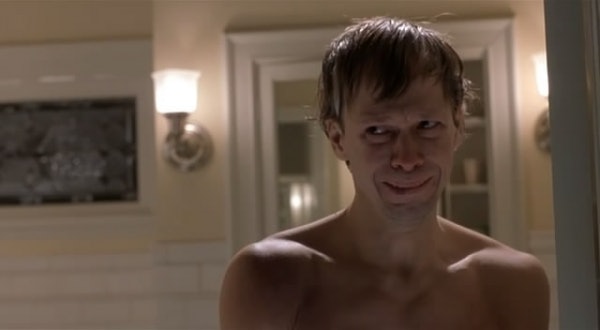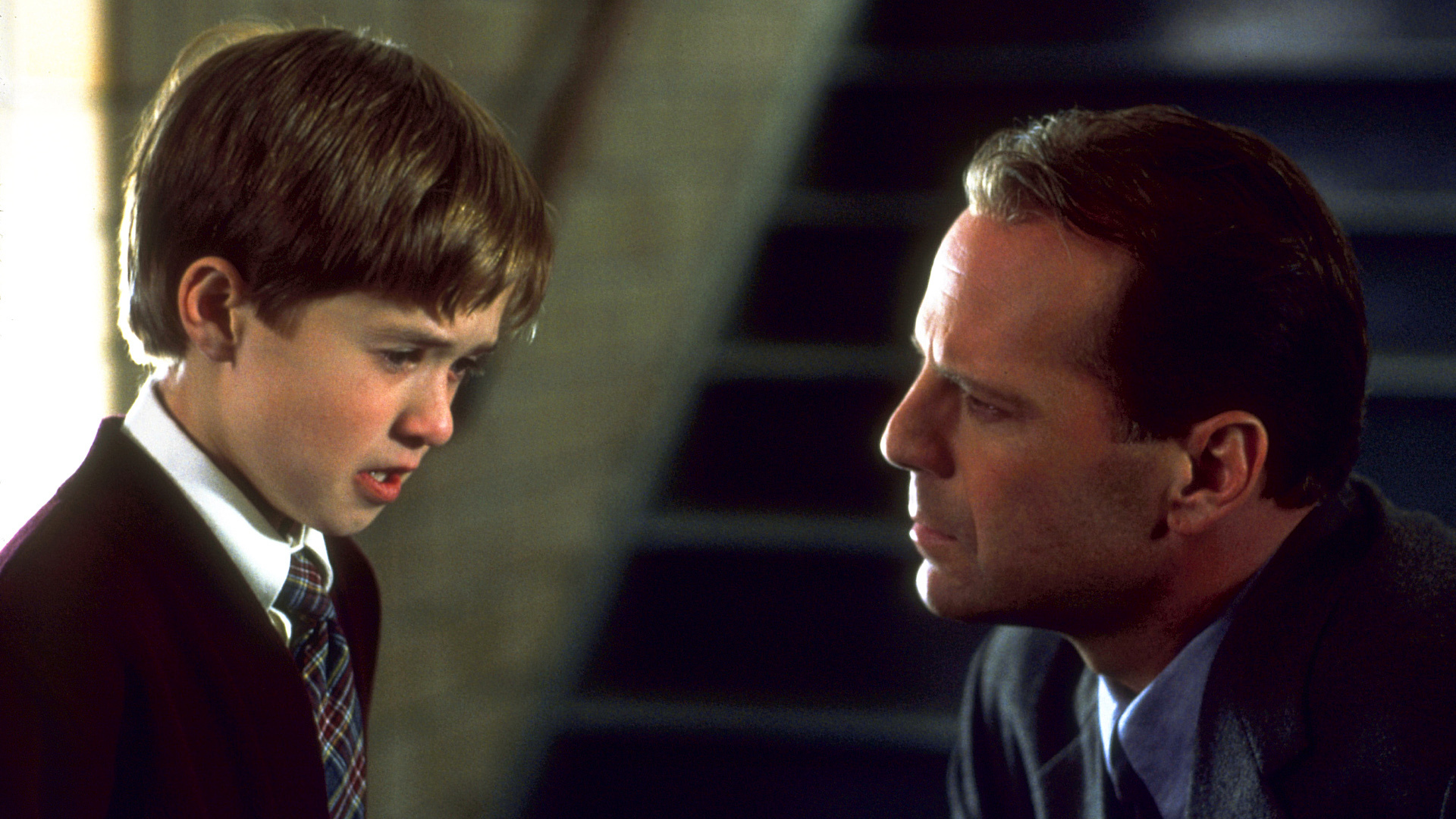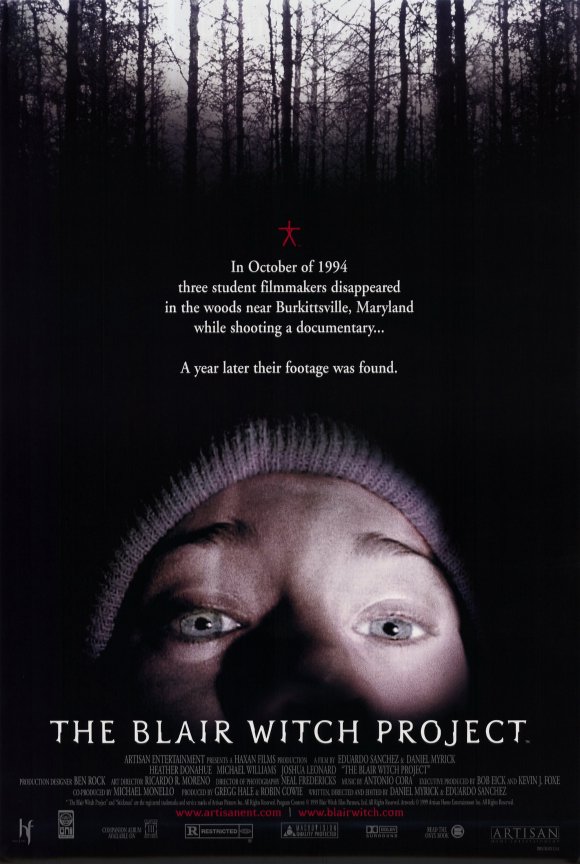 |
| Fig. 1: The Sixth Sense poster. |
 |
| Fig. 2: Vincent Grey. |
 |
| Fig. 3: Malcolm talks to Cole about what he sees. |
 |
| Fig. 4: Cole's breath is visible as the temperature drops. |
The ending comes as a big shock to those who are not aware Malcolm is dead, as M. Night Shyamalan has clearly put a lot of effort into making sure it's not easy to detect. Anna Crowe appears to be upset with her husband for being distant and spending all his time working. It's not until the end that the audience realises she is mourning her late husband, and struggling to move on. It also becomes very obvious that no characters apart from Cole acknowledge Malcolm's presence. He walks around Cole's school, and even walks into a house during a wake without anyone seeming to question him being there. Cole also never mentions Malcolm to anyone else, despite the audience being lead to believe Malcolm must know Cole's mother, as the two of them sit together in Cole's home as they wait for him to return from school.
 |
| Fig. 5: Wearing red to a funeral. |
At the end of the film, when Cole finally tells his mother his secret, she wears a red jumper instead of the black she is usually seen in. When Cole tells her he sees ghosts, she is at first skeptical, but comes to accept and believe what he is telling her. Her decision to wear red is indicative of her acceptance of Cole, but also the overall warmth of the film, and how Cole's interactions with ghosts have gone from negative to positive.
The Sixth Sense frightens and touches people equally. It is a horror with a happy and resolved ending, that finishes with a twist that has made it famous. "There is an unnerving but emotionally satisfying maturity to The Sixth Sense that makes it so much more than a beautifully worked parlour trick. It's a ghost story about being human." (Nathan, 2000).
Images:
Figure 1: The Sixth Sense poster. (1999) [poster] At: http://www.moviepostershop.com/the-sixth-sense-movie-poster-1999 (Accessed on: 04.05.2016)
Figure 2: Vincent Grey. (1999) From: The Sixth Sense. Directed by: M. Night Shyamalan [Film still] United States: Hollywood Pictures. At: http://www.bustle.com/articles/33625-the-sixth-sense-surprise-ending-is-obvious-if-you-pay-attention-to-these-6-clues (Accessed on: 04.05.2016)
Figure 3: Malcolm talks to Cole about what he sees. (1999) From: The Sixth Sense. Directed by: M. Night Shyamalan [Film still] United States: Hollywood Pictures. At: http://www.vox.com/2014/8/6/5974127/sixth-sense-blair-witch-horror-movies-15-years-anniversary (Accessed on: 04.05.2016)
Figure 4: Cole's breath is visible as the temperature drops. (1999) From: The Sixth Sense. Directed by: M. Night Shyamalan [Film still] United States: Hollywood Pictures. At: http://www.cinemablend.com/new/Night-Shyamalan-Made-Secret-Movie-Here-Details-68214.html (Accessed on: 04.05.2016)
Figure 5: Wearing red to a funeral. (1999) From: The Sixth Sense. Directed by: M. Night Shyamalan [Film still] United States: Hollywood Pictures. At: http://nnm.me/blogs/kibo9000/shestoe-chuvstvo-the-sixth-sense-1999-hdrip-bdrip-720p/ (Accessed on: 04.05.2016)
Bibliography:
Ebert, R. (1999) 'The Sixth Sense' In: rogerebert.com 06.08.1999 [online] At: http://www.rogerebert.com/reviews/the-sixth-sense-1999 (Accessed on: 04.05.2016)
Nathan, I. (2000) 'EMPIRE ESSAY: The Sixth Sense Review' In: Empire 01.01.2000 [online] At: http://www.empireonline.com/movies/empire-essay-sixth-sense/review/ (Accessed on: 04.05.2016)
Cain, S. (2014) 'The Sixth Sense: the film that frightened me most' In: The Guardian 22.10.2014 [online] At: http://www.theguardian.com/film/filmblog/2014/oct/22/the-sixth-sense-film-frightened-me-most-sian-cain (Accessed on: 04.05.2016)




